10-17-2022, 08:36 PM
There are two tubular electrolytics.
One is a dual, a Philco cap, 10uF and 8uF replacement type. Surprisingly it showed 10uF and 10uF on both halves. Not an original one, I think.
The other is a Cornell cardboard shell one. I decided it looks age-appropriate.
The 10+10uF was actually used, probably as the Ground to Centertap cap. I have not found the original one that is supposed to be used for it.
So I decided `to make the dual one to be the rectifier and the filter caps; the first would be a Solen 8.2uF and the other 22uF 450V, a high ripple type so it lasts forever.
And the cardboard I made into the missing 10uF Centertap-to-GND cap.
So yesterday I started gutting the cardboard one. I remember failing a few years ago in doing so, as I could never extract the core, and in trying to break the top layer of whatever that is, a brittle potting compound, I destroyed the shell.
So this time I chipped at the top layer with a small chiesel, it was like 5/16" thick, and successfully got to the softer core. I then tried to use a corkscrew to extract it, with no success. Then I used heat and then the corkscrew, also with no success, no matter the effort.
So how did I do it, you ask? Well, I soaked the cap in mineral spirits for a day. Then I tried the corkscrew, again unsuccessfully, and then I decided to use the heat gun again, and this time the soaked and heated core came out without much effort.
So this is what you do: remove the top hard potting compoundm soak the cap in mineral spirits overnight and with some (not even much) heat use a corkscrew to gut it.
Then I quickly cleaned the interior of the remnants of that hard tar at the bottom, cleaned it with mineral spirits, and then I did what the photos below show.
The shell is gutted.
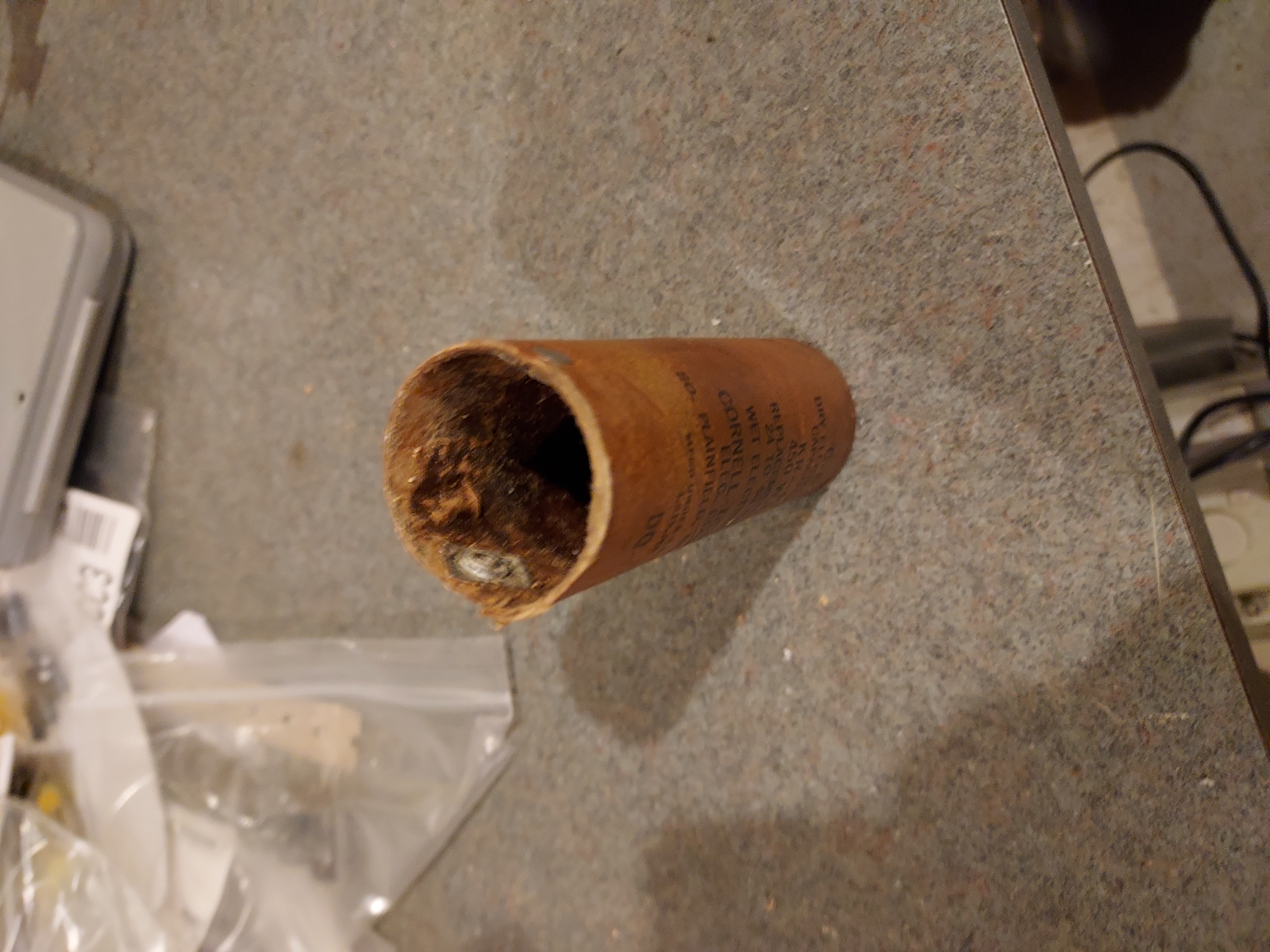
Fishpaper bottom is made and the wired cvap is inserted.
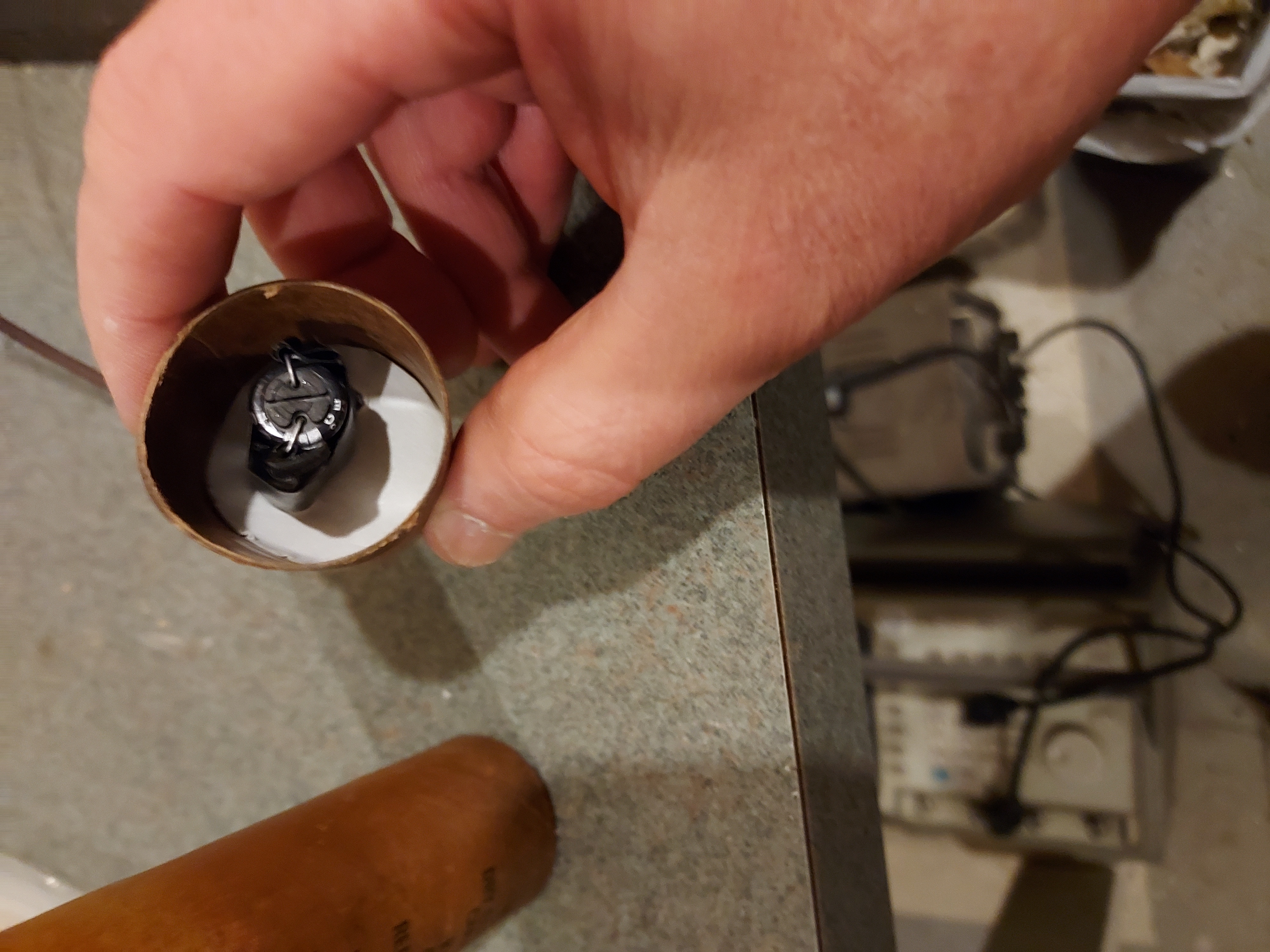
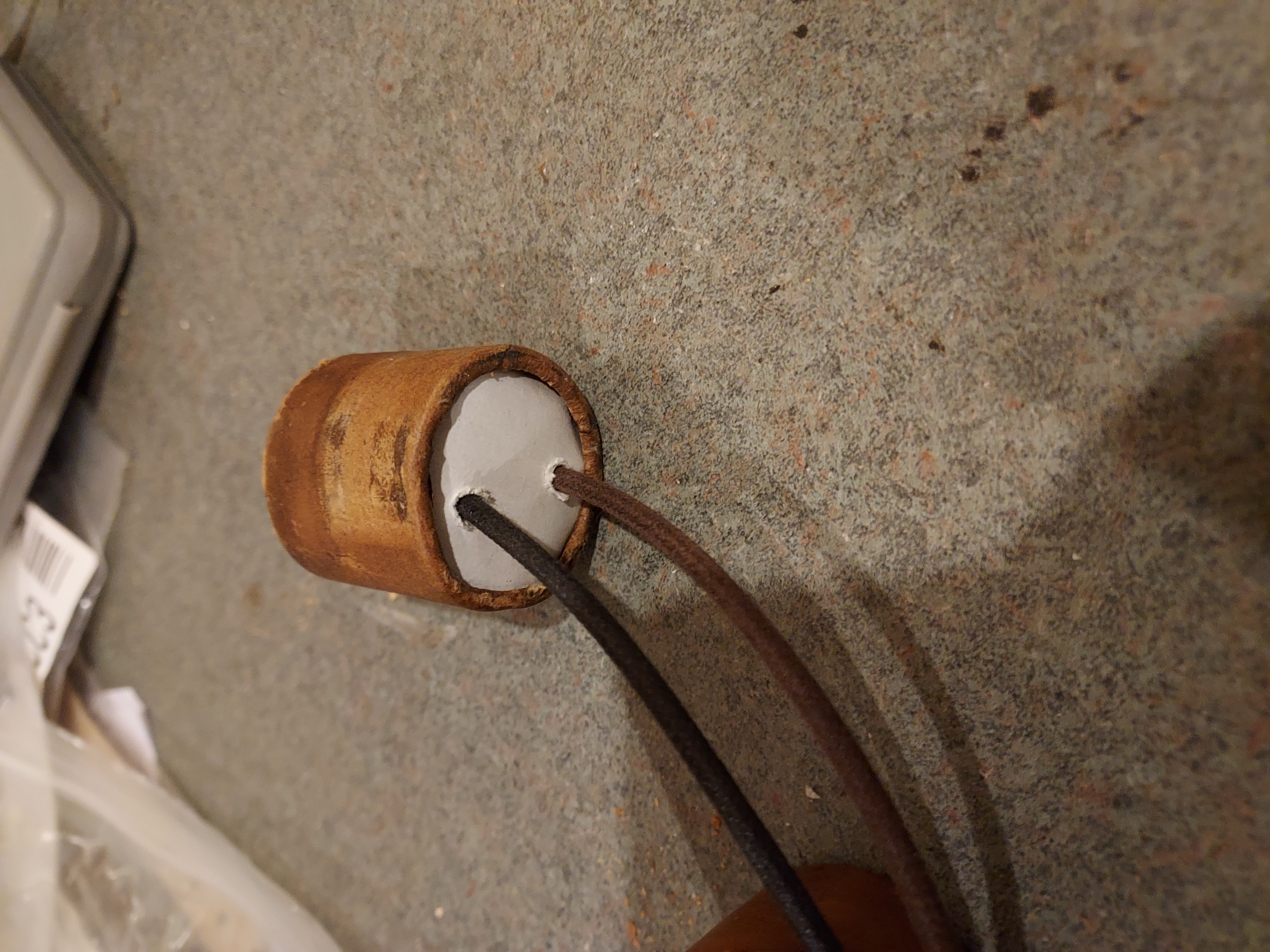
The cap's wires are potted inside and the bottom is potted outside.
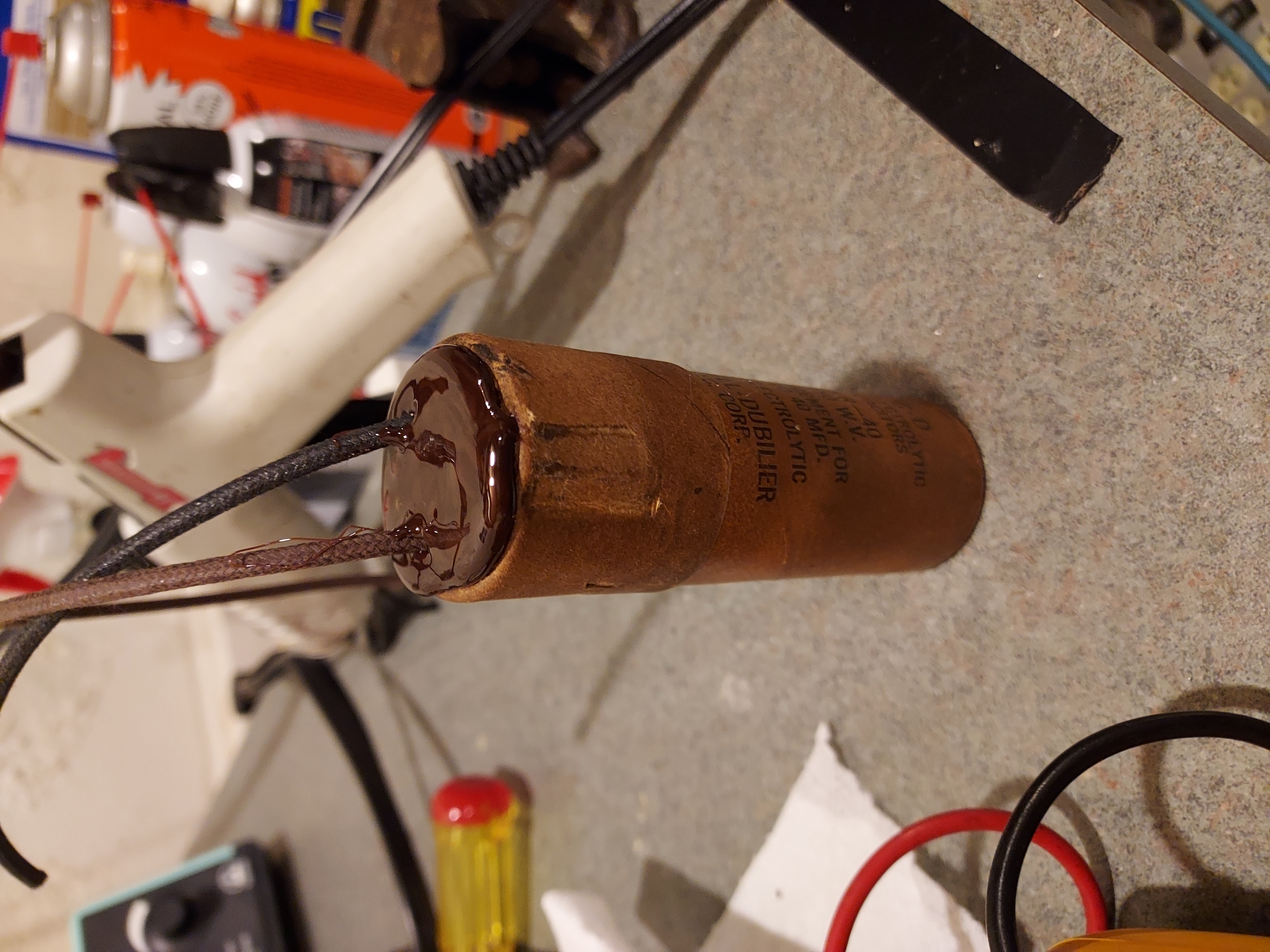
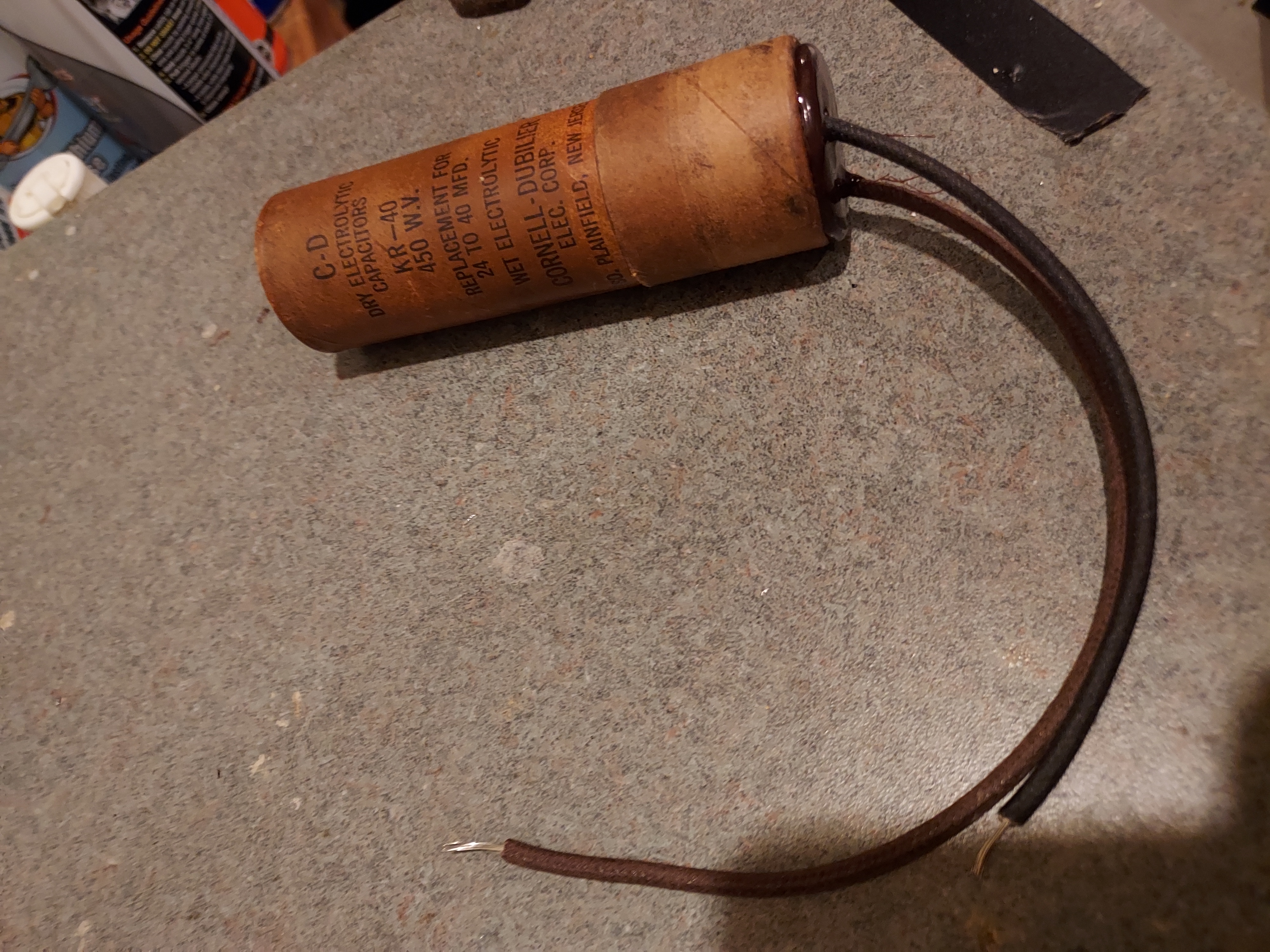
The aluminum cap's shell is meantime being soaked in vinegar to remove all salts that are left. This one gutted very easily.
One is a dual, a Philco cap, 10uF and 8uF replacement type. Surprisingly it showed 10uF and 10uF on both halves. Not an original one, I think.
The other is a Cornell cardboard shell one. I decided it looks age-appropriate.
The 10+10uF was actually used, probably as the Ground to Centertap cap. I have not found the original one that is supposed to be used for it.
So I decided `to make the dual one to be the rectifier and the filter caps; the first would be a Solen 8.2uF and the other 22uF 450V, a high ripple type so it lasts forever.
And the cardboard I made into the missing 10uF Centertap-to-GND cap.
So yesterday I started gutting the cardboard one. I remember failing a few years ago in doing so, as I could never extract the core, and in trying to break the top layer of whatever that is, a brittle potting compound, I destroyed the shell.
So this time I chipped at the top layer with a small chiesel, it was like 5/16" thick, and successfully got to the softer core. I then tried to use a corkscrew to extract it, with no success. Then I used heat and then the corkscrew, also with no success, no matter the effort.
So how did I do it, you ask? Well, I soaked the cap in mineral spirits for a day. Then I tried the corkscrew, again unsuccessfully, and then I decided to use the heat gun again, and this time the soaked and heated core came out without much effort.
So this is what you do: remove the top hard potting compoundm soak the cap in mineral spirits overnight and with some (not even much) heat use a corkscrew to gut it.
Then I quickly cleaned the interior of the remnants of that hard tar at the bottom, cleaned it with mineral spirits, and then I did what the photos below show.
The shell is gutted.
Fishpaper bottom is made and the wired cvap is inserted.
The cap's wires are potted inside and the bottom is potted outside.
The aluminum cap's shell is meantime being soaked in vinegar to remove all salts that are left. This one gutted very easily.
People who do not drink, do not smoke, do not eat red meat will one day feel really stupid lying there and dying from nothing.



![[-] [-]](https://philcoradio.com/phorum/images/bootbb/collapse.png)


